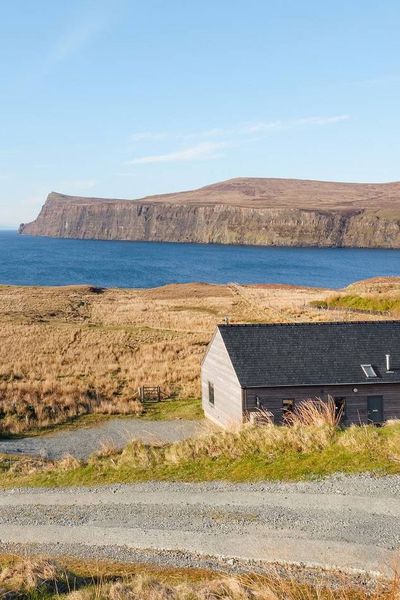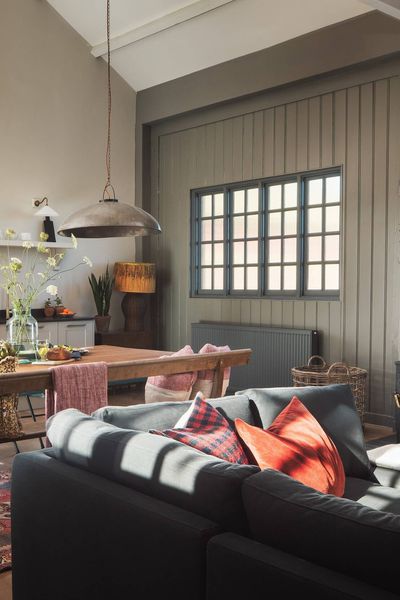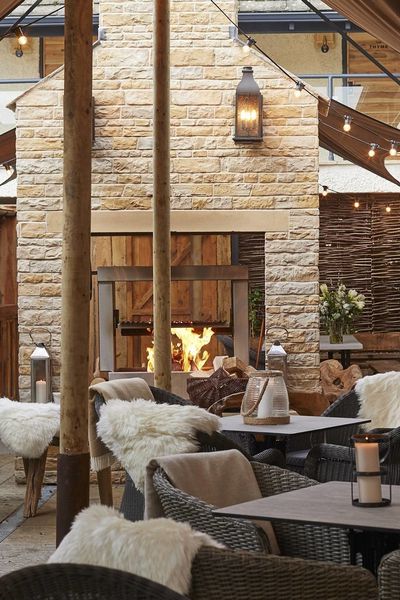
Fosso Bianco, Bagni San Filippo, Tuscany
These thermal baths in the hills of a remote part of Tuscany are uniquely striking thanks to the calcium carbonate deposits which form into huge white shapes around the pools. The 2km uphill walk means there are fewer visitors than other natural hot springs around Italy, and you might even get the eerily beautiful place to yourself. The biggest of the formations is the White Whale, named for its resemblance to a whale’s mouth, but while some visitors come just for the sights, others are drawn by the health benefits rumoured to derive from the rich mud at the bottom of the pools.
Stay at: Agriturismo Le Case della Buca, an eco-friendly farmhouse surrounded by olive groves and woodland. Visit for a week to get a true taste of the region’s best natural attractions.

Terme Segestane, Trapani, Sicily
It might seem odd to head away from Sicily’s crystal clear coastal waters in search of somewhere to take a dip, but the springs near Trapani are worth a break from the beach.
They’re on the outskirts of a remote fishing village in a peaceful valley where you’ll be surrounded by only the mountains as you bathe. The water comes from three sulphur springs that flow at a temperature of around 45 degrees celsius. As well as the hot springs, there’s a cave system which features a natural sauna known as ‘the cave of the queen’ and the surreal sight of Grotto Mangiapane, a village built almost entirely within the caves.
Stay at: Agriturismo Tarantola, a picturesque white farmhouse in the Alcamo wine-growing area. We’d suggest flying to Palermo Airport and visiting the hot springs as part of a week-long stay.

Fontcalda Springs, Tarragona, Spain
In the middle of the Mola and Crestall mountains, these hot springs are some of the wildest in the whole of Spain. You’ll work up a bit of a sweat on the walk there, but the limestone cliffs, ancient olive groves and interesting rock formations are a real delight. Explore the springs as part of a day trip, or use them as a stop off during a hike or cycle along the Via Verde, a scenic 23km route along an old railway bed from Arnes-Lledó to El Pinell de Brai. Visitors go not only for the springs themselves, but for the Sanctuary of Fontcalda, which dates back to the 14th century. Originally part of a convent, the area is still used as a stop on an annual pilgrimage from the nearby town of Gandesa.
Stay at: Cal Pep, a hilltop village house 10 minutes from the beach. Fly into Barcelona Airport and visit these springs as part of a road trip through Spain’s stunning countryside.

The Roman Baths of Dorres, Pyrénées-Orientales
These lesser-known baths are located in the commune of Dorres in southern France, an area of tiny villages scattered in mountains and lakes. The baths date back to the Middle Ages and while some modern additions have been made, the amazing views of green valleys in the snow-capped Eastern Pyrenees remain. The high temperature of 38 degrees celsius make the springs a wonderful activity even in winter months and the perfect end to a day on the slopes or hiking along the area’s beautiful wilderness trails.
Stay at: Castell Rose, a beautiful, pink marble gentleman’s house in its own parkland. Fly to Perpignan–Rivesaltes Airport and visit the springs on your journey down from France and Spain.

Thermae Bath Spa, Bath
According to legend, the city of Bath was founded by Prince Bladud, as a sign of gratitude after bathing in the thermal waters cured him of leprosy. More verifiably, the Romans loved the waters here and the Anglo-Saxons called the place Acemannesceastre, “aching man’s city” because of the curative powers of the springs. The ancient baths are now only for looking, but the fine tradition is continued in several spots around the city. Most notable is Thermae Bath Spa, with a rooftop pool that offers views of the pale limestone town and surrounding hills as you bob in the hot water. It’s best to book in advance, but worth the wait.
Stay at: Abbey Hotel, a super central hotel with views to the medieval Abbey and gentle Somerset hills. Easily accessible by road or train from the South east and west, Bath is perfect for a weekend away.










